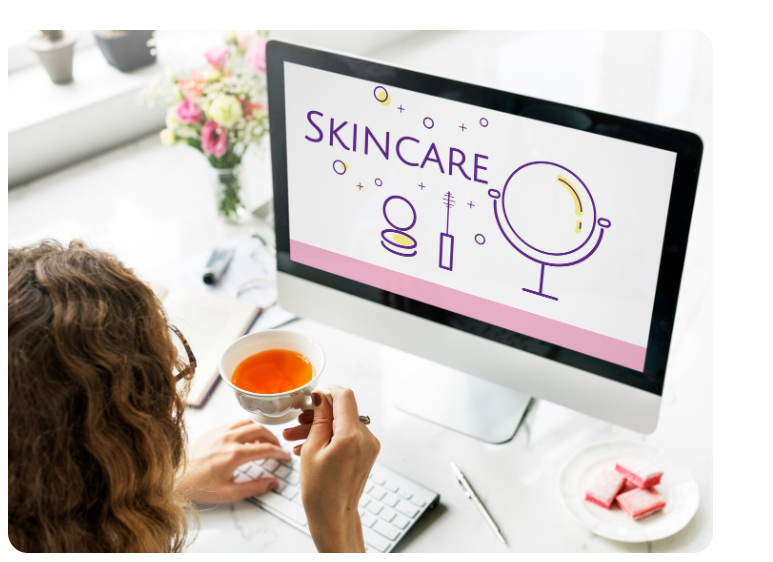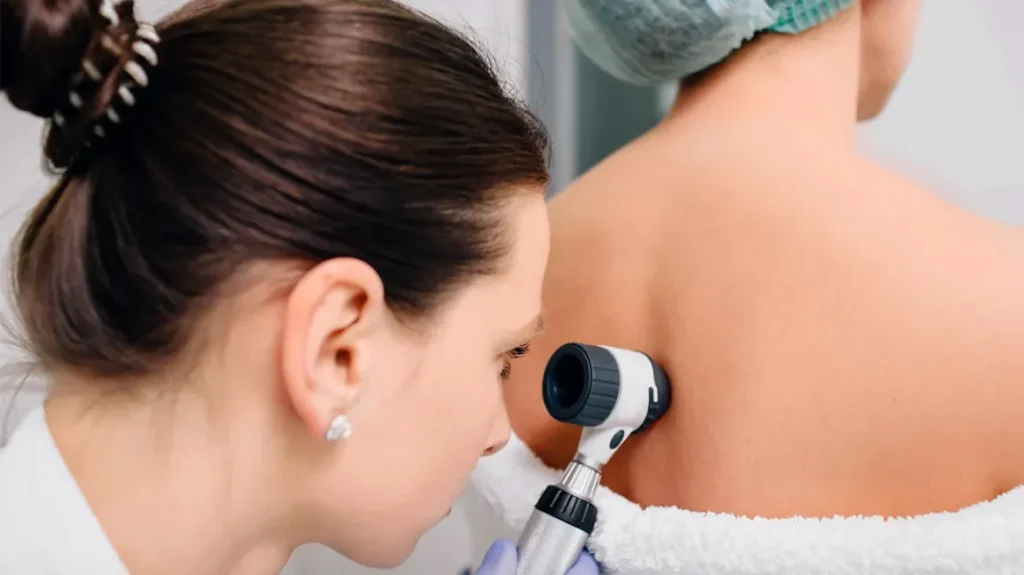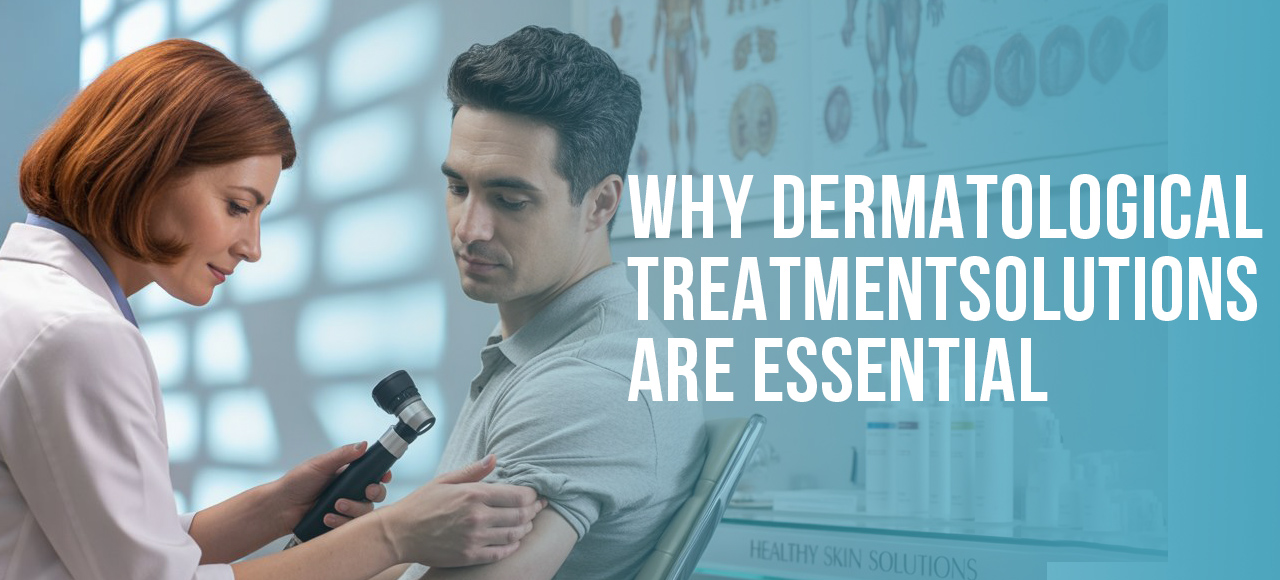In a world where beauty trends, viral skincare hacks, and DIY remedies dominate platforms like Instagram, YouTube, and TikTok, it’s easy to get caught up in the idea that glowing, healthy skin can be achieved overnight with a new product or homemade solution. From toothpaste-on-acne tricks to layering countless serums, people are constantly experimenting with new skincare methods. While some of these might offer temporary results or work for certain individuals, the truth is that dermatological treatment solutions provide far more reliable, safe, and long-term benefits—especially when it comes to serious skin concerns.
So while beauty trends may come and go, the need for professional, evidence-based skincare remains constant. Dermatological treatments aren’t just about chasing beauty—they’re about achieving skin that is healthy, strong, and resilient for years to come. Whether you’re a teenager battling hormonal acne or an adult looking to reverse sun damage or fine lines, investing in expert skin solutions is one of the smartest and most empowering steps you can take for your overall wellness.
What Are Dermatological Treatment Solutions?
The term dermatological treatment solutions refers to any medical or cosmetic intervention performed by a licensed dermatologist or skincare specialist aimed at improving skin health and appearance. These interventions go beyond what you can find in over‑the‑counter (OTC) products—offering clinically proven ingredients and advanced technologies.
Some key types include:
Topical Therapies
- Prescription retinoids (like tretinoin, adapalene) for acne and anti-aging
- Hydroquinone, azelaic acid for pigmentation
- Steroids, calcineurin inhibitors for eczema, dermatitis
Injectables
- Botox (botulinum toxin) to soften dynamic facial lines
- Dermal fillers (hyaluronic acid, calcium hydroxylapatite) for volume restoration
- PRP (Platelet-Rich Plasma) for rejuvenation
Laser & Light-Based Treatments
- IPL, Q-switched lasers for pigmentation and redness
- Fractional ablative/non-ablative lasers for resurfacing
- Red/blue light therapy for acne and skin balance
Chemical Peels
- Light peels (glycolic, salicylic, mandelic acid) for texture and maintenance
- Medium-depth peels (TCA) for fine lines and pigmentation correction
- Deep peels for deeper wrinkles and unwanted growths
Microneedling & Microdermabrasion
- Microneedling with or without PRP to induce collagen remodelling
- Radiofrequency microneedling for tightening and scars
- Mechanical microdermabrasion for light exfoliation
Minor Surgical & Cryotherapy
- Cryotherapy, electrosurgery for wart and lesion removal
- Subcision, punch techniques for severe acne scars
Key Benefits of Professional Dermatological Treatments

In today’s market, it’s easy to get overwhelmed by skincare options—shelves full of creams, serums, and masks that promise glowing skin overnight. But when it comes to solving deeper skin issues like acne, pigmentation, aging, or chronic skin conditions, professional dermatological treatments offer far more effective and safer results than over-the-counter (OTC) products.
Here’s why professional care stands out:
Medical-Grade Products and Technology
Unlike OTC products that are designed for general use, dermatologists use medical-grade ingredients and advanced technologies. These treatments go deeper into the skin layers to address the root cause of the problem. Whether it’s laser therapy, prescription-strength retinoids, or chemical peels, these solutions are clinically tested, approved, and highly effective.
For example, a dermatologist might prescribe tretinoin (a powerful retinoid) for acne or aging—something you won’t find in regular store-bought creams. Similarly, lasers used in clinics for pigmentation or scar removal are far more precise and powerful than home devices.
Personalized Treatment Plans
Every skin is different. What works for one person may worsen another’s condition. Dermatologists examine your skin type, history, lifestyle, and sensitivity before creating a customized plan. This ensures you get exactly what your skin needs—nothing more, nothing less.
For instance, you might have both dry patches and oily areas, or acne and sensitivity. A professional will adjust your treatment accordingly, using the right blend of therapies for your specific concerns.
Targeted Results That Last
Professional treatments aim for long-term solutions, not just temporary fixes. If you suffer from recurring acne or pigmentation, a dermatologist can identify the root cause—like hormonal imbalance, sun damage, or clogged pores—and design a treatment that prevents future breakouts, not just cover them up.
These experts also schedule follow-ups to track your progress, adjust medications or treatments as needed, and ensure your skin keeps improving with time.
Safe and Monitored Procedures
Trying DIY peels or high-strength products at home can be risky and even damaging. Dermatologists perform procedures in sterile environments with proper hygiene, using proven protocols. They know how to minimize side effects, manage skin reactions, and handle complications if they arise.
You’re not left guessing. From consultation to post-treatment care, everything is explained, monitored, and handled with care.
Emotional and Confidence Boost
Beyond clear skin, professional care often improves your self-esteem and mental well-being. Dealing with visible skin concerns like acne scars, rosacea, or early wrinkles can take a toll on your confidence. When you see real results from safe, effective treatment, it reflects in your mood, social life, and even productivity.
Related Blog:- What is a Cosmetology Course? A Complete Guide
Most In-Demand Dermatological treatment Solutions in 2025

As skin health awareness continues to grow worldwide, more people are turning to professional dermatological treatments to improve their appearance and treat underlying skin issues. With rising pollution, screen exposure, stress, and early aging symptoms, dermatology clinics are seeing a surge in demand for specific procedures that deliver safe, quick, and visible results. Below are the top dermatological solutions trending in 2025:
Laser Skin Resurfacing
Laser resurfacing remains one of the most requested treatments in 2025. It helps reduce wrinkles, scars, age spots, and sun damage by removing damaged skin layers with precision.
There are two types:
- Ablative lasers (e.g., CO2 or Erbium) that remove thin layers of skin.
- Non-ablative lasers (e.g., Fraxel) that stimulate collagen without damaging the surface.
This treatment is particularly popular among those aged 30–50 who are looking to rejuvenate their skin without going through surgical procedures. Plus, newer technologies offer minimal downtime and more tailored results, making them appealing for busy professionals.
Chemical Peels
Chemical peels are a staple in modern dermatology clinics. In 2025, peels are more advanced, customizable, and safer. These peels use acids like glycolic acid, salicylic acid, or TCA to exfoliate dead skin, treat acne, lighten pigmentation, and give the skin a brighter tone.
Patients can choose from:
- Superficial peels for mild exfoliation
- Medium peels for pigmentation and wrinkles
- Deep peels for scars and severe skin texture issues
These are especially popular among urban populations dealing with sun exposure, pollution damage, and uneven skin tone.
Microneedling with PRP (Vampire Facial)
Microneedling combined with PRP (platelet-rich plasma) is in high demand, especially on platforms like Instagram and TikTok. It’s favored for treating:
- Acne scars
- Fine lines
- Large pores
- Stretch marks
Microneedling creates micro-injuries on the skin, which triggers collagen production. When PRP (extracted from the patient’s own blood) is applied, it boosts healing and enhances results.
This natural yet scientific method is a favorite among millennials and Gen Z looking for subtle, effective glow-ups with fewer synthetic ingredients.
HydraFacial
Gone are the days of basic facials. Today, HydraFacials are the gold standard in non-invasive skin care. This treatment cleanses, exfoliates, extracts, and hydrates all in one go using a unique machine-based approach.
HydraFacials are quick, painless, and suitable for all skin types, even sensitive skin. They’re ideal for people looking for:
- A monthly maintenance routine
- An instant glow before events
- Deep pore cleansing without irritation
Botox and Dermal Fillers
While not new, Botox and fillers continue to dominate due to improved techniques and subtle, natural-looking results. Botox is used to relax facial muscles, reducing fine lines, while dermal fillers restore volume in areas like cheeks, lips, and under the eyes.
In 2025, both men and women are opting for these treatments earlier (in their late 20s and early 30s) to prevent deeper wrinkles from forming.
Acne and Scar Treatments
Due to stress, hormonal changes, and poor lifestyle choices, acne continues to be a top concern. Dermatological solutions like blue light therapy, salicylic acid peels, and oral medications are widely used. For acne scars, options like:
- Fractional CO2 lasers
- Subcision
Microneedling are popular choices that provide long-term skin improvement.
Skin Lightening and Pigmentation Removal
Uneven skin tone, melasma, and sun spots are a big concern, especially in Asian and African regions. In 2025, pigmentation treatments like Q-switched lasers, chemical peels, and glutathione infusions are gaining traction for delivering radiant, even-toned skin.
Why Dermatological Treatments Are Necessary Today

Understanding global trends highlights why professional skin solutions are more essential than ever:
Environmental & Lifestyle Challenges
- Pollution and blue light from screens accelerate oxidative stress, leading to pigmentation and fine lines.
- Elevated stress and fast-paced urban life exacerbate acne, eczema, and premature aging.
Rising UV Damage & Skin Cancer Risk
- Despite widespread awareness, sun damage continues—and skin cancer cases are increasing year after year.
- Dermatological care enables early detection through skin checks, dermatoscopy, and lesion removal.
Self-Image & Social Media Pressure
- With video calls, selfies, and social platforms, more people are scrutinizing their skin—spur demand for real-world improvements over filters.
Technological Advances
- Minimally invasive treatments like picosecond lasers, RF microneedling, and laser-assisted drug delivery offer powerful outcomes with less downtime.
- Such options far outperform OTC alternatives in efficacy and safety.
Aging Population & Preventive Culture
- People living longer are more focused on healthy aging, not just youthful looks.
- Regular treatments and skin monitoring now serve as key longevity practices.
Dermatology as Preventive Medicine
- Treating pigmentation and sun damage early prevents long-term harm.
- Evidence-based dermatology addresses both aesthetic and health concerns—like HPV-induced warts, actinic keratosis, or early melanoma.
In essence, dermatological interventions have evolved beyond vanity—they’re now tools for prevention, medical wellness, and enhanced quality of life.
How Often Should You Get Dermatological Skin Treatments?
The optimal frequency varies based on your skin goals, the treatment intensity, and your dermatologist’s recommendations. Here’s a helpful guideline:
Treatment Type | Frequency & Maintenance |
Topical prescriptions | Daily or as instructed (e.g., nightly retinoids) |
Botox injections | Every 3–4 months |
Dermal fillers | Every 6–18 months (depending on type and area) |
Light chemical peels | Every 4–6 weeks during active phases |
Medium/deep chemical peels | Every 6–12 months |
Microneedling w/ PRP | 3 initial sessions, spaced 4–6 weeks apart, then yearly maintenance |
Fractional laser resurfacing | 1–2 sessions per year—adjustable based on recovery |
IPL for pigmentation | 4–6 sessions, each 3–4 weeks apart |
Laser hair removal | 6–8 sessions monthly until target density is achieved |
Medical follow-up (eczema, psoriasis) | Every 2–6 months to review and tweak the plan |
Tips:
- Onboarding vs Maintenance – Follow the intensive schedule early on, then shift to maintenance.
- Seasonal Considerations – Avoid deep peels/lasers in high UV seasons unless you can strictly protect your skin.
- Hybrid Protocols – Combine treatments (like microneedling + IPL) with rest periods for synergy.
Follow-Up Appointments – These aren’t optional; they track response and fine-tune care.
How to Choose the Right Dermatological Clinic or Specialist
Choosing the right provider ensures safety, satisfaction, and results. Here’s a comprehensive checklist:
Credentials & Qualifications
- Choose a board-certified dermatologist (or local equivalent).
- For aesthetic procedures, verify subspecialty credentials or accredited training.
Check for CPR/First Support certifications in clinics.
Experience & Reputation
- Look for patient reviews on platforms like Google, RealSelf, Practo, or Lybrate.
- Viewing before/after photos of actual patients builds trust.
Be cautious of unrealistic promises or ultra-cheap deals—they may compromise quality.
Consultation Process
- Initial visits should include detailed history taking, examination, and diagnosis.
- Labs or imaging may be ordered for complex cases.
- Providers should clarify risks, costs, timelines, and alternate options.
Clinic Safety & Cleanliness
- Treatment rooms should follow strict sterilization protocols.
- Single-use needles and sanitized equipment are non-negotiable.
- Accredited clinics with recognized safety standards are ideal.
Quality of Equipment
- Ask about device make and model—the right tech makes a big difference.
- Ensure FDA/CE-approved devices are used.
Transparency & Follow-Up
- Treatment estimates and follow-up schedules should be clearly laid out.
- Access to support post-treatment is critical in case of side effects.
Cost & Value
- Price reflects skill, safety, and service—not simply cost.
- Check refund policies for postponed or canceled treatments.
- Some clinics offer financing plans—shop smart, not cheap.
Communication Style
- Choose a provider who listens, explains options in clear language, and responds to concerns.
- Accessibility via phone or chat between appointments is a good sign.
Final Thoughts
In 2025, dermatological treatment solutions are more relevant than ever—not just for aesthetics, but for medical wellbeing, emotional confidence, and healthy aging. Scientific breakthroughs, regulatory standards, and social factors have elevated skincare to a vital aspect of holistic healthcare.
By beginning with a professional consultation, sticking to your treatment schedule, and choosing a qualified provider, you’re making a lasting investment in your skin’s health. Whether your goals involve acne control, pigment reduction, aging gracefully, or simply feeling more confident—expert care is what turns a target into transformation.
Take the next step: book a consultation with a board-certified provider near you and create a personalized roadmap to healthy, radiant skin.


